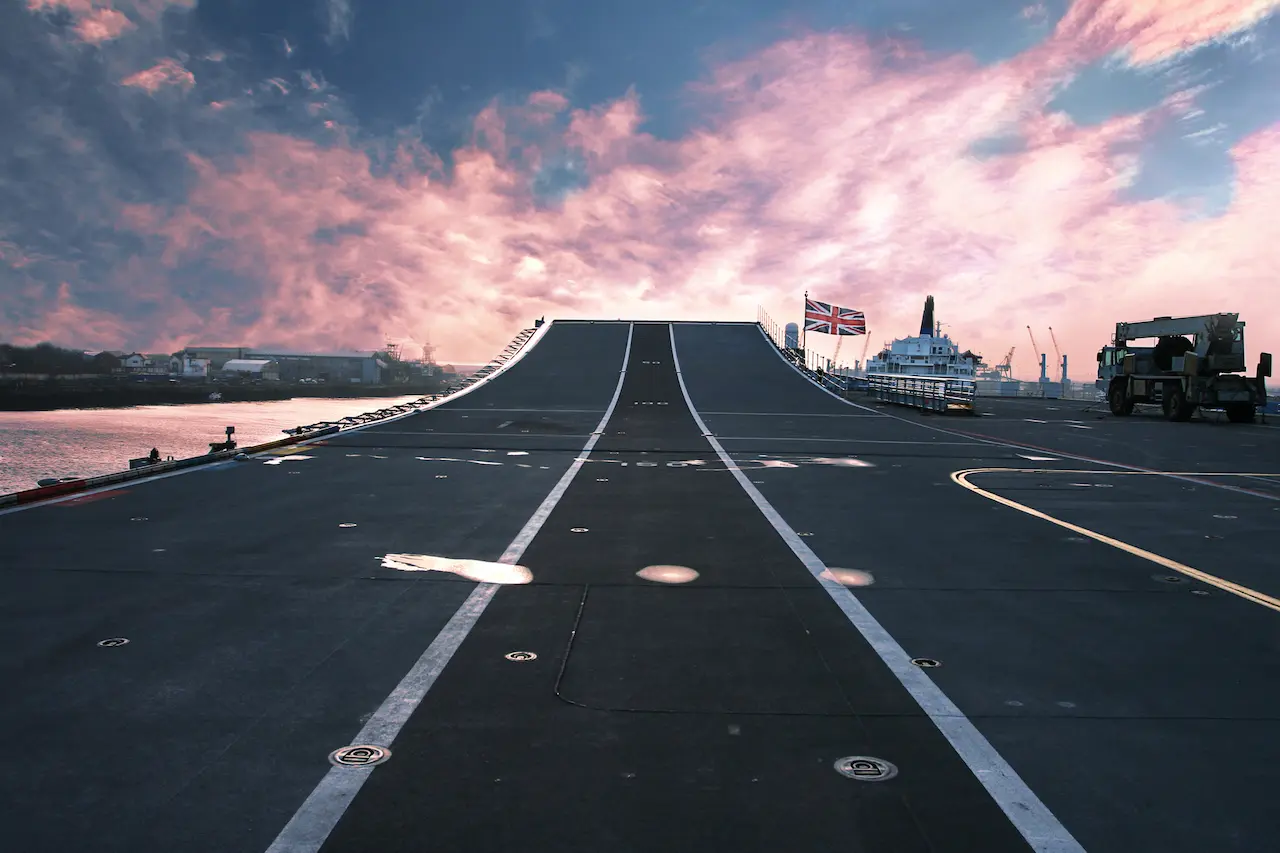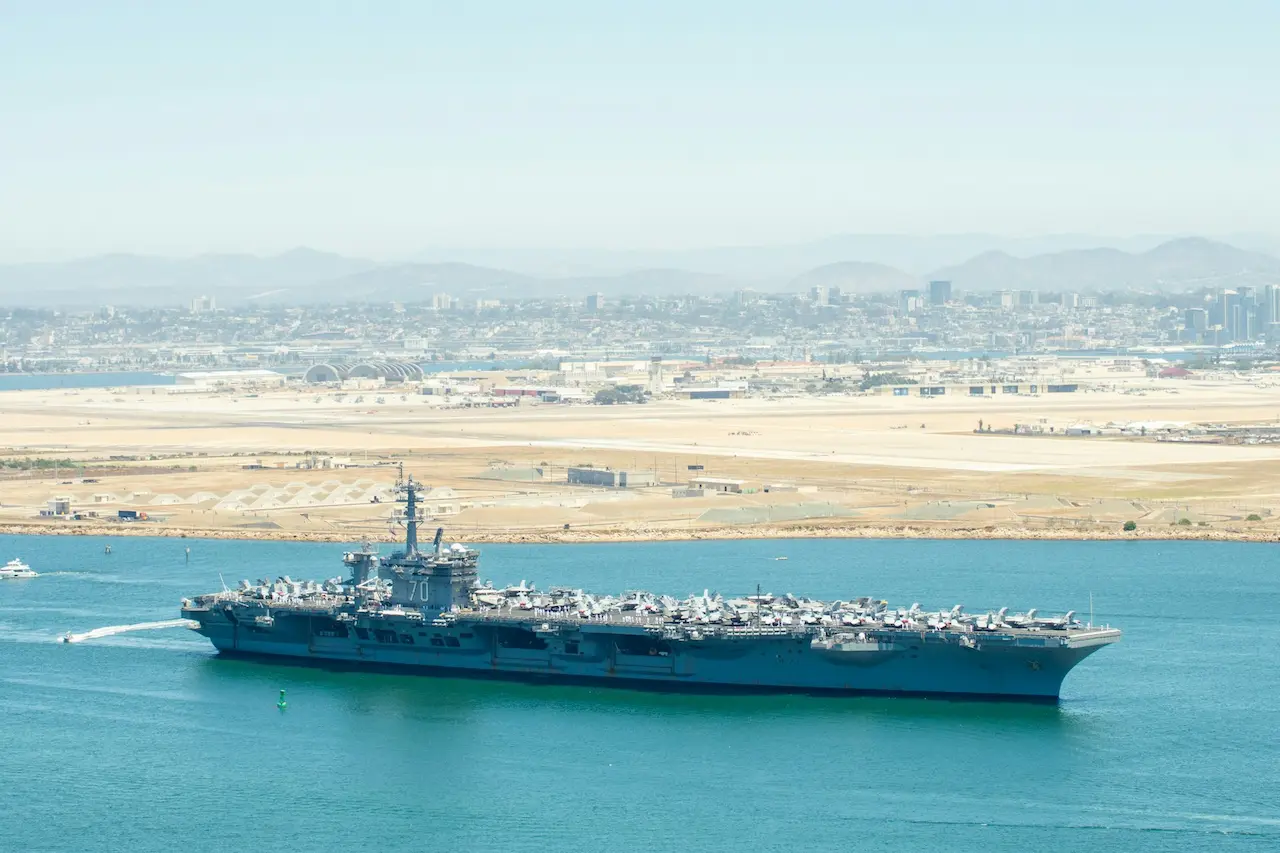When Was the First Aircraft Carrier Built?
Introduction: Birth of a Naval Revolution
Aircraft carriers changed naval warfare forever. No longer were battles fought only by warships with cannons and torpedoes. With the advent of carriers, naval power now meant air superiority at sea. The evolution of these massive vessels from experimental platforms to floating airbases reshaped global military strategy. But when was the first aircraft carrier built, and how did the concept spread around the world? Let’s explore.
The World’s First Aircraft Carrier
The title of the world’s first true aircraft carrier belongs to the British Royal Navy’s HMS Argus, commissioned in September 1918. Originally an ocean liner named Conte Rosso, she was converted during World War I. Argus was the first ship with a full-length flat flight deck, enabling wheeled aircraft to take off and land.
Although HMS Furious and other vessels had experimented with launching aircraft from platforms, Argus was the first to integrate take-off and landing operations from a flat deck, setting the design standard for all future carriers.
Planes Used:
- Sopwith Camels
- Sopwith Pups

USA’s First Aircraft Carrier: USS Langley (CV-1)
The United States followed closely behind. In March 1922, the USS Langley was commissioned as the first aircraft carrier of the U.S. Navy. It was converted from the coal ship Jupiter. Named after aviation pioneer Samuel Pierpont Langley, it was experimental but highly influential.
The Langley played a vital role in training U.S. naval aviators and proving the operational feasibility of aircraft at sea.
Notable Milestones:
- March 20, 1922: Commissioned
- October 17, 1922: First aircraft takeoff (Lt. V.C. Griffin in a Vought VE-7)
Planes Used:
- Vought VE-7SF
United Kingdom’s First Aircraft Carrier: HMS Argus and HMS Hermes
As mentioned, HMS Argus was the first operational aircraft carrier with a full-length deck. However, HMS Hermes, laid down in 1918 and commissioned in 1924, was the first purpose-built aircraft carrier, influencing later designs with features like an island control tower and enclosed hangar.
Hermes was an ambitious leap forward in naval aviation, combining innovation and experimentation.
Notable Planes:
- Fairey Flycatcher
- Fairey Swordfish

Japan’s First Aircraft Carrier: IJN Hōshō
Japan was the first country to commission a purpose-built aircraft carrier: the Hōshō, in December 1922. Unlike converted ships, Hōshō was built from the keel up to be a carrier, incorporating flight deck and aviation support into its original design. This set Japan apart as a pioneer in carrier-based aviation.
The Hōshō served in various operations, including training and early combat during the Second Sino-Japanese War.
Notable Planes:
- Mitsubishi B1M torpedo bomber
- Nakajima A1N fighter
China’s First Aircraft Carrier: Liaoning (CV-16)
China entered the carrier age much later. Its first aircraft carrier, the Liaoning, was commissioned in 2012. Originally the unfinished Soviet Varyag, China purchased and retrofitted the ship. The Liaoning serves primarily as a training vessel for the People’s Liberation Army Navy (PLAN) and laid the foundation for future Chinese carrier development.
Planes Used:
- Shenyang J-15 fighter jets
Timeline of Aircraft Carrier Milestones
- 1918: HMS Argus commissioned by UK
- 1922: USS Langley (USA) and IJN Hōshō (Japan) commissioned
- 1924: HMS Hermes commissioned (UK)
- 1944: Japanese carrier Shinano launched – largest of WWII
- 1955: USS Forrestal, first supercarrier, commissioned
- 1961: USS Enterprise (CVN-65) – first nuclear-powered carrier
- 1975: USS Nimitz commissioned
- 2012: Liaoning commissioned by China
- 2017: China begins sea trials of home-built carrier Shandong
Top 10 Countries by Number of Aircraft Carriers
- United States: 11 nuclear-powered carriers, numerous amphibious assault ships
- United Kingdom: 2 active (Queen Elizabeth, Prince of Wales)
- China: 2 active (Liaoning, Shandong), 3rd under construction
- India: 2 active (INS Vikramaditya, INS Vikrant)
- France: 1 active nuclear carrier (Charles de Gaulle)
- Russia: 1 active (Admiral Kuznetsov, currently in overhaul)
- Italy: 2 light aircraft carriers
- Japan: 2 Izumo-class helicopter carriers being converted to F-35B use
- Spain: 1 light aircraft carrier (Juan Carlos I)
- Brazil: Currently none, formerly operated São Paulo
The World’s First Nuclear Aircraft Carrier
Introduction
The USS Enterprise (CVN-65) was more than just an aircraft carrier—it was a revolutionary leap forward in naval engineering, combat strategy, and global power projection. As the world’s first nuclear-powered aircraft carrier, Enterprise reshaped how navies operate, forever changing the scope and speed of naval missions. Commissioned in 1961 and decommissioned in 2012, the “Big E” served for over five decades, leaving a legacy that lives on in modern supercarriers and even pop culture.
History and Development
Cold War Origins
Emerging during the height of the Cold War, Enterprise was born out of a strategic necessity. As tensions with the Soviet Union escalated, the U.S. Navy needed a warship that could stay at sea indefinitely and respond rapidly to global crises. Nuclear propulsion offered the perfect solution: long-range capability, high speed, and unmatched endurance without dependence on vulnerable refueling ships.
Carrying a Legendary Name
The name Enterprise came with high expectations. Its predecessor, USS Enterprise (CV-6), was the most decorated ship of World War II. By reviving the name for CVN-65, the Navy made a powerful statement—the legacy of dominance and innovation would continue, this time on a platform unlike anything the world had seen.
Design and Technical Capabilities
A Nuclear-Powered Titan
Enterprise was powered by eight A2W nuclear reactors—unprecedented for a warship. This innovation gave it virtually unlimited range, allowing years of deployment without the need for refueling. With a top speed of over 33 knots, the Enterprise was not only massive (over 1,100 feet long and 90,000+ tons) but also fast and agile.
Advanced Air Wing
Capable of carrying up to 90 aircraft, the Enterprise functioned as a floating airbase. Its air wing included fighters, bombers, early warning aircraft, and electronic warfare platforms, enabling it to strike deep into enemy territory or provide air dominance wherever it sailed.
Revolutionary Flight Operations
The angled flight deck and steam-powered catapults allowed for simultaneous launches and recoveries—critical for high-tempo combat operations. Enterprise set the benchmark for flight deck efficiency and safety, a model still followed today.
Operational Role and Service History
Cuban Missile Crisis & Vietnam
Shortly after its commissioning, Enterprise was thrust into action during the 1962 Cuban Missile Crisis. It enforced the U.S. naval blockade of Cuba, deterring Soviet escalation. By 1965, it was flying combat missions in Vietnam—marking the first time a nuclear-powered ship engaged in combat operations.
Space Program Support
Enterprise wasn’t just a warship—it supported space exploration too. It participated in astronaut recovery missions for both the Mercury and Apollo programs, standing by as a symbol of American progress in the Space Race.
Desert Storm and Beyond
In 1991, Enterprise played a critical role in Operation Desert Storm, launching strikes against Iraqi forces. Following 9/11, it was among the first carriers deployed for Operation Enduring Freedom, launching attacks on Taliban and al-Qaeda targets in Afghanistan. Even after 40 years of service, it remained a frontline asset.
Strategic Impact and Contributions
Redefining Power Projection
Nuclear propulsion made Enterprise a game-changer. It could stay at sea longer, respond faster, and operate farther from home ports than any previous carrier. This capability enabled U.S. forces to maintain global readiness and project strength anywhere, anytime.
Shaping Carrier Design
Its innovations—reactor configuration, catapult-assisted takeoffs, electronic warfare systems—directly influenced the Nimitz-class carriers and even the latest Gerald R. Ford-class ships.
Humanitarian Missions
From disaster relief to emergency evacuations, Enterprise’s enormous deck space, hospital facilities, and aircraft were critical assets in delivering aid and stability in crisis zones.
Legacy and Cultural Significance
A Cultural Icon
Enterprise transcended military circles. It featured in documentaries, books, and even inspired the Star Trek starship USS Enterprise, symbolizing exploration and technological progress.
The Next Chapter: CVN-80
The name lives on with USS Enterprise (CVN-80), a Gerald R. Ford-class carrier currently under construction. This next-generation ship will carry forward the legacy, equipped with electromagnetic catapults, advanced sensors, and automation features.
The USS Enterprise (CVN-65) wasn’t just the world’s first nuclear aircraft carrier—it was the prototype for future maritime dominance. From enforcing Cold War deterrence to aiding space exploration and executing humanitarian missions, it proved the unmatched utility of nuclear-powered carriers. Even in retirement, the “Big E” continues to inspire naval innovation and military strategy. As the U.S. Navy builds the next Enterprise, its name carries forward a spirit of resilience, power, and global reach that remains unrivaled.
Notable People in Carrier History
- Commodore Kenneth Whiting: Oversaw USS Langley
- Lt. V.C. Griffin: First takeoff from USS Langley
- Lt. Cdr. Eric ‘Winkle’ Brown: First to land a jet on a carrier (HMS Ocean)
- Admiral Isoroku Yamamoto: Architect of Japan’s carrier-based Pearl Harbor attack
- Captain D.R.F. Campbell RN: Developed angled flight deck design
Conclusion: 100 Years of Floating Airbases
From the modest HMS Argus to the nuclear-powered supercarriers of today, aircraft carriers have transformed naval power. They have participated in major conflicts, responded to global crises, and continue to shape the strategic balance of power. As more nations invest in carriers, their role as the ultimate symbol of military reach is more relevant than ever.
